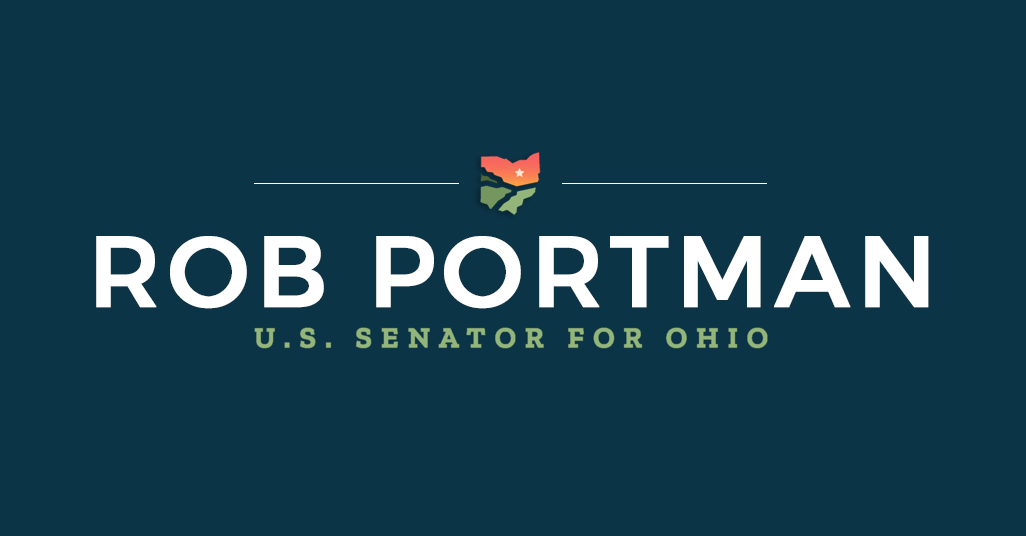Source: United States Senator for Ohio Rob Portman
November 16, 2021 | Portman Difference
The bipartisan Infrastructure Investment & Jobs Act (IIJA) makes an historic investment in America’s core infrastructure needs – roads, bridges, ports, broadband, water infrastructure, and other important assets. The law, which is endorsed by more than 100 industry associations, trade groups, and unions, will create jobs, increase productivity, and pave the way for decades of economic growth and prosperity – all without raising taxes or increasing inflation.
Senator Portman played a key role in crafting the legislation, which President Biden signed into law on Monday, that will address specific infrastructure needs across Ohio.
Here is how the bill will benefit Northeast Ohio:
Roads and Bridges
The bipartisan IIJA provides $110 billion in new funding for roads and bridges, including $9.2 billion that will come directly to Ohio to help with roads and highways and $483 million to help with Ohio bridges.
In addition, Ohio projects will also be able to apply for tens of billions in additional competitive grant funding opportunities, including $12.5 billion in the new the Bridge Investment Act, $5 billion in a new National Infrastructure Project Assistance grant program to help with large projects, $7.5 billion in the RAISE (formerly BUILD) grant program, and $8 billion in the Infrastructure for Rebuilding America (INFRA) grant program.
This funding could be used to fund several projects that City of Cleveland Capital Investments are working on such as the Euclid Corridor, Opportunity Corridor, and more.
In addition, the funding for bridges could help fund projects like the High Level Bridge in Summit County that spans 220 feet above the Cuyahoga River and Metro Parks Serving Summit County’s High Bridge Trail. The bridge connects North Akron to Cuyahoga Falls. Additionally, Richland County is facing over $19 million in bridge repairs and replacements for 43 bridges rated in poor condition.
The Lordstown Smart Logistics Hub could benefit from the RAISE grant program. The Eastgate Regional Council of Governments has previously sought after these grants for this project. This is a strategic infrastructure initiative which capitalizes on Lordstown’s location at the intersection of multimodal freight transportation, broadband, and vehicle electrification that will position the area as the premier regional warehousing and distribution hub in rural Eastern Ohio Appalachia.
Lastly, this funding will help benefit trails and bike paths throughout the Cleveland area. The bipartisan infrastructure legislation provides a 10 percent set aside within the surface transportation block grant program to states for recreational trails and other transportation alternatives. This provision will provide $7.2 billion nationally over the next five years.
Airports, Ports and Waterways
The infrastructure law provides $2.25 billion over five years for the Port Infrastructure Development Program (PIDP) through the U.S. Department of Transportation’s Maritime Administration. This competitive grant program is the main source of federal funding for port infrastructure needs and provides funding for planning, operational and capital financing, and project management assistance to improve port capacity and financing for ports like the Cleveland-Cuyahoga County Port.
The law also provides a total of $17 billion for the Army Corps of Engineers to address their infrastructure priorities, support coastal resiliency and flood mitigation. For example, projects such as the construction of a new lock at the Soo Locks, restoring jetty structures, and dredging could receive funding through this legislation.
The IIJA also includes $25 billion in grant funding to support our nation’s airports. The Cleveland Hopkins Airport is working on numerous infrastructure improvement projects that could utilize this funding.
The law provides $1 billion in additional funding for the Great Lakes Restoration Initiative (GLRI), which is used to improve the health of Lake Erie. In addition, the funding could be used for the ‘Vision for the Valley’ project, a comprehensive community plan focused on protecting the health and safety of our waterways.
Broadband
The IIJA includes $65 billion for broadband, including more than $42 billion to states, U.S. territories, and the District of Columbia via block grants. This is consistent with Senator Portman’s bipartisan BRIDGE Act proposal to help close the gap in access to reliable high-speed internet that persists in certain communities.
In the Cleveland area (Cuyahoga County and parts of surrounding counties) an estimated 38.4 percent of households earning less than $20,000 per year, about 48,000 households, do not have an internet subscription of any kind. Additionally, an expansion of high-speed internet along 100 miles of SR-11 from Lake Erie to the Ohio River, has the potential to serve over 620,000 citizens in the Mahoning Valley and beyond in Appalachian Ohio.
Ohio is set to receive hundreds of millions in broadband deployment dollars that the state could use this funding to help expand access throughout Northeast Ohio, making a difference in the lives of students, workers, and families.
Water Infrastructure
The law includes the bipartisan Drinking Water and Wastewater Infrastructure Act and provides $10 billion to address PFAS and a historic $15 billion for lead service line replacement. Additionally, the law provides $23.4 billion for the Drinking Water and Clean Water State Revolving Funds, which help finance a variety of water infrastructure projects such as stormwater and local sewer projects, as well as the construction of water treatment facilities. Many Northeast Ohio communities experience challenges associated with aging sewer and water infrastructure, and could benefit from this additional funding.
###
